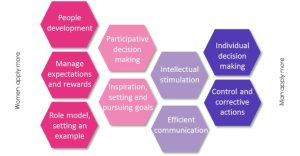
Share this article
Once girls and boys see people like themselves employed in all industries, their choices in life will be much greater – and employers will benefit from their capability and talent, not their gender.
Research shows that gender balanced leadership can give companies a competitive edge, which is a major factor for survival and growth, as well as providing diversification in the workplace. CLP constantly witness how diversified groups in leadership development programmes are more efficient, communicate more openly, set and achieve more ambitious goals and that they implement more socially responsible leadership than other predominantly male groups.
I’m a woman working at CLP, here is my personal point of view
Gender and cultural diversity is one of the building blocks of CLP. Our team is composed of both men and women in the same ratio, as well as having a variety of cultural backgrounds. From my personal experience, being a female team member at CLP is easier than in other companies I’ve worked for. Our diverse team’s approach to projects and problem-solving inspire us to be creative and innovative. I experience the positive effects of inclusiveness in my everyday work life, especially during our brainstorming sessions.
Research suggests…
…that even though women are believed to excel in so-called nurturing competencies, they’re also very good at taking initiative, displaying integrity and honesty and remain focused on driving results. These attributes describe leaders who can take on difficult challenges, improve overall organisational performance, ensure that people act with integrity, and who deliver results.
Leadership behaviours more frequently applied by women are found to improve organisational performance, by strengthening three dimensions:
- direction, setting and pursuing goals
- being accountable / responsible
- leadership and setting example
“While men and women apply similar leadership behaviours, they do so with different frequencies” – Women Matter 2, McKinsey & Company (2016)
Straight to the point
The idea that women and men apply similar leadership behaviours, at different rates, is becoming more and more widely accepted. Nonetheless, the unbalanced presence of women in lead positions is still compromising the overall outcome.
By developing diversified and gender balanced leadership, companies experience an expansion of the range of behaviours among their leaders that allow a strengthening of organisational performance.
What can we do?
Even though this post does not cover all the elaborated solutions that the situation might require, CLP work towards a diversified team by assessing the following:
- analysing gender diversity indicators (i.e. diagnosis of the status quo, the proportion of women in the company, pay levels and gaps);
- using the said indicators to define actions, urgency and communication of success;
- implementing measure to facilitate work-life balance;
- setting up coaching programs targeted to increase women’s awareness of self-imposed limitations;
- involving male colleagues in the leadership diversification process, shifting the situation from a “women’s problem” to everyone’s problem.
DIVERSITY vs INCLUSIVITY
Diversity has often a passive meaning and used to express the intention of recognising individual differences. Inclusivity has a deeper and broader but most of all active meaning: the intention of including people who might be otherwise be excluded or marginalized.
“A society that does not establish pathways to leadership for all of its citizens is a society that is denying itself a possibility of excellence.”
Yours,
Chiara Consoli (generation Y, woman and very happy to work as part of CLP’s highly inclusive team)
